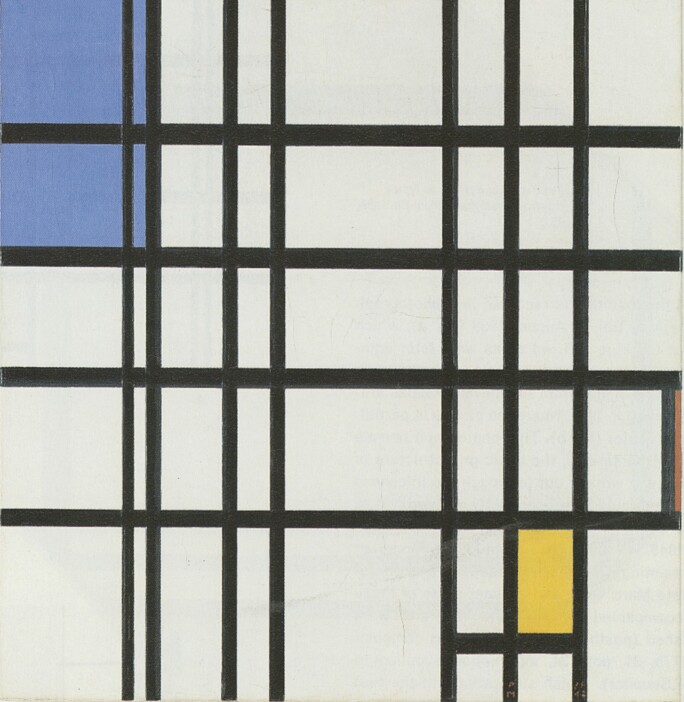“T he revelation came to him about 1930,” the French writer Jean Cassou recalled of the artist Joaquín Torres-García, "when he revealed himself as committed to abstraction, in full possession of his truth, of his simplicity. . . . His abstraction is of the philosophic and geometric order. A primitive freshness, a luminous and ingenious clarity, a reason which is the immediate reason of things, enchant us."
Painted at the critical turning point in Torres-García’s artistic and philosophical development, the monumental Construcción en blanco manifests the vital humanism, classicism and architectonic order of the artist’s emerging pictorial language. “It’s a matter of style that I might call cathedral,” Torres-García wrote in 1931. He continues:
Something quite strong, quite mature (a synthesis of all my work), quite proper, in a constructive sense, and even better, it’s something new because as [Cubist sculptor Jacques] Liptchitz [sic] says, it is the most ancient prehistory.
Torres-García had begun to apprehend the philosophical enterprise of contemporary abstract art upon his arrival in Paris in September 1926 and his acquaintance, two years later, with the Dutch artist Theo van Doesburg, co-founder of the De Stijl movement. “Quite simply, we met within the universal,” van Doesburg wrote of their intellectual rapport in 1929. “That is the palette which Torres-García uses.”

The progression of his work from 1928 to 1930 reveals his absorption of De Stijl’s utopian vision. In 1931, Torres-García synthesizes van Doesburg’s geometric idealism with his own spiritual and historic worldview based upon three cosmic realms: reason and intellect, soul and emotion, and the natural world. These realms are made visual in perfect harmony on canvas, as Torres-García begins to embed a dense network of universal symbols into a geometrically pure grid, building works in which the synergy of structure and symbol simulate the ideal order and equilibrium of the universe.

The strong vertical orientation of Construcción en blanco suggests the stone façade of an ancient building or temple. Symmetrical and almost hieratic in feeling, the painting is inscribed with numerous pictographic symbols, some of them indecipherable: the clock (time) and schematic columns and edifices (architecture) at the center of the grid are flanked by Universal Man and Universal Woman and, around them, masks (tribal art), fish (nature, life), and the paired anchor (hope) and key (reason, threshold). This composite symbology, equilibrated within a linear scaffolding that sometimes corresponded to the Golden Section, implied universal order and transcendence, projecting Torres-García’s neo-Platonic vision of art as an ideal representation of reality.
One of two monumental canvases painted in 1931, Construcción en blanco is the last example remaining in private hands; its companion hangs in the collection of the Museo de Arte Latinoamericano in Buenos Aires. Masterful in its execution and critical to the development of twentieth-century modernism, Construcción en blanco is a rare treasure.



